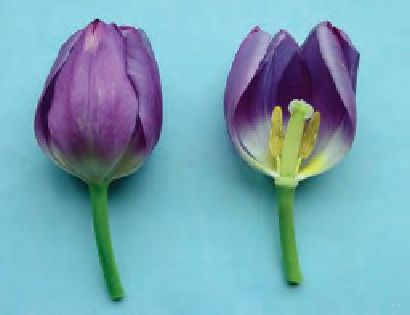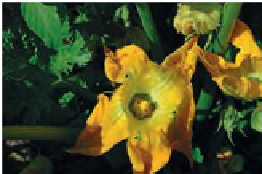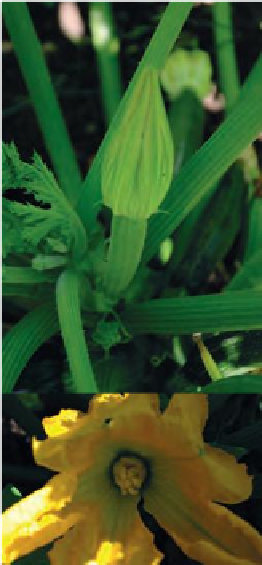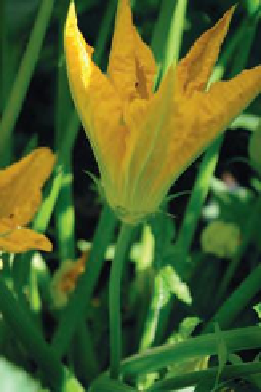Agriculture Reference
In-Depth Information
Corolla of 6 tepals
Anther
3 lobed stigma
Stamen
(1 of 6)
Filament
Short style
Ovary
Receptacle
Nectar guide
Pedicel
Figure 8.6
(a) Flower of
Tulipa
, a monocotyledon; (b) diagram showing the typical structure of a
monocotyledonous fl ower
Most conifers are monoecious with male and female
cones (Figure 8.9).
(a)
(b)
A plant possessing flowers with both male and
female organs is
hermaphrodite
. Species with
separate male and female flowers on the same
plant are
monoecious
. Species which produce
male and female flowers on different plants are
dioecious
.
Characteristics of wind- and insect-
pollinated flowers
Pollination
is the transfer of pollen, containing the
male sex cell, from anther to stigma either of the
same flower or different
flowers and is the essential
first step in the process leading to fertilization. In
cross-pollination
, pollen transfer is between different
plants, while in
self-pollination
it is within or between
flowers on the same plant. The commonest natural
agents of pollination are
wind
and
insects
.
8
Figure 8.7
Monoecy in courgette
Cucurbita pepo:
(a) female fl ower showing ovary between the petals
and the pedicel and branched stigma within fl ower;
(b) male fl ower lacking an ovary with stamens and
pollen within fl ower
Pollination
is the transfer of pollen from stamen
to stigma of a flower or flowers.
Fertilization
is
the fusion of a male sex cell (the male gamete)
from a pollen grain with a female sex cell (the
female gamete) in the ovule to produce an
embryo.
lack colour), their absence of nectaries and scent
production, and their production of large amounts
of small, smooth, light pollen which is intercepted
by large feathery stigmas. They also often have
proportionally larger stigmas and flexible stamens
that protrude from the flower to maximize the
chances of dispersing and intercepting pollen grains in
the air.
Wind-pollinated flowers
The characteristics of
wind-pollinated flowers
(Figure 8.8) are their small size, their green appearance
(their petals are reduced in size or absent and





































